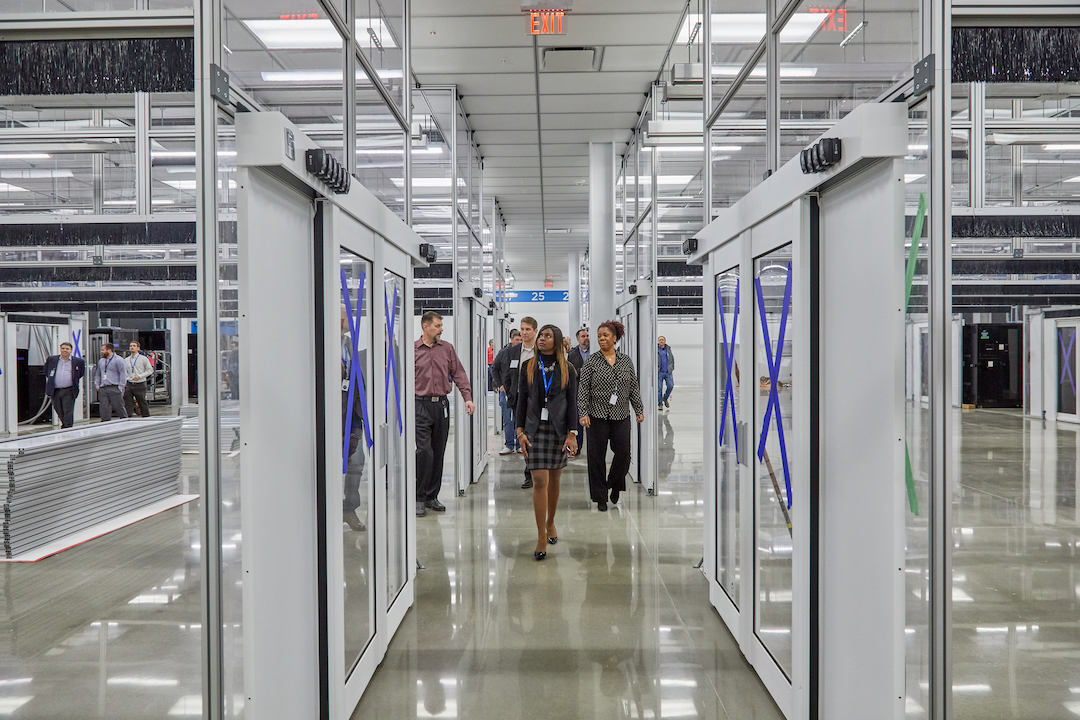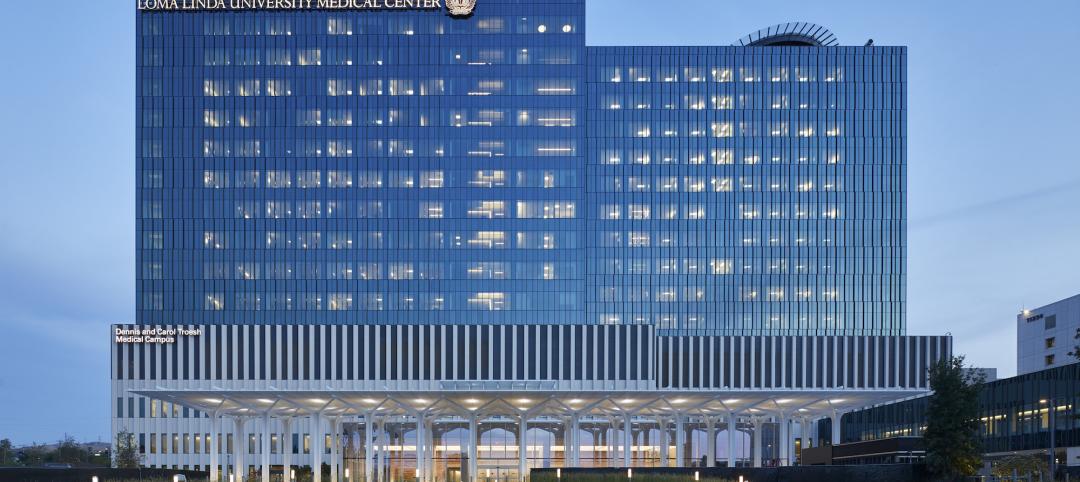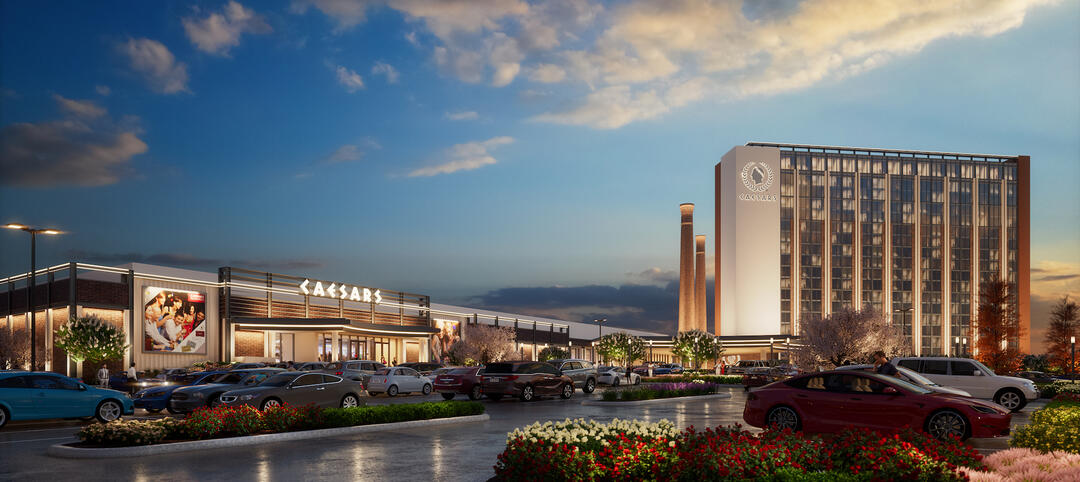In 2018, Holder Construction did $1.38 billion in data center construction. As of May 2019, it had 28 data center projects in the works, and the firm expects construction this year to approach $3 billion. One such project—in Phoenix, for a large REIT—opened in July 2019 with 6 MW of processing capacity, and will reach 48 MW when it’s eventually built out to around 500,000 sf.
To keep pace with this sector’s expansion, Holder is increasing its headcount by 25%. “The AEC industry is very close to being overwhelmed by data center demand, especially for electricians,” says Tony TeVault, Vice President with Holder’s office in Atlanta. “Every market is at full capacity and equipment vendors are super-stretched.”
Data center sector growth is creating opportunities for AEC firms, as owners scramble to build facilities as fast as they can. “Speed to market” is this sector’s abiding objective, in part to accommodate looming 5G technology.
ALSO SEE: Top 35 Data Center Architecture Firms
ALSO SEE: Top 50 Data Center Engineering Firms
ALSO SEE: Top 45 Data Center Construction Firms
“As soon as a client receives a positive capacity demand signal in a region, the race is on to design and build a data center at rapid pace,” says James Coe, PE, Senior Principal with Syska Hennessy, whom BD+C interviewed with Joshua Fluecke, PE, LEED AP, Associate Principal. They note that engineering design teams are under pressure to adapt a provider’s prescriptive design within an eight- to 12-week window, and to offer construction administration support for an accelerated build schedule that typically falls between seven and nine months.
“Contractors need to use every tool at their disposal to ensure just-in-time delivery of materials and methods like prefabrication to shorten schedules,” says John Arcello, Advanced Tech Core Market Co-Leader with DPR Construction. “The magic will happen in the planning stages: preconstruction and VDC services have the tools to drive the process,” especially in design-build collaborations that he says are more common within this sector.
Another “tool” some AEC firms have availed themselves of is the acquisition of talent and market share to serve a consolidating sector with fewer and bigger players. Last December, the engineering firm Morrison Hershfield merged with CCG Facilities, a mission-critical engineering firm. And last March, HED joined forces with the data-center specialty firm IDG.
Hyperscale and edge data center facilities prevail
The sector is polarized between two dominant building types: massive hyperscale facilities and much smaller data centers for edge computing, which are usually located near population centers to ensure smooth content delivery.
Hyperscale data centers are simply getting bigger. Robert Sty, PE, LEED AP, Director of the Tech Sector for HDR, says that it wasn’t too long ago when data centers with 20 MW of capacity were considered large. Now, hyperscale campuses are being planned for 200 to 300 MW of power and millions of square feet. Gary Murphy, a Principal with HED, says data centers are being designed for 500+ MW. “Data centers are becoming more industrialized: as demand grows, so does their scale and performance.”
Water cooling for cabinets is becoming more prevalent, as owners push the envelope on higher allowable temperatures to lower their operational costs. Terence Deneny, Vice President of Structure Tone’s Mission Critical division, has seen some users locate IT racks in parking lots to test equipment tolerances and take advantage of free air cooling. Matt Lamont, HKS’s Vice President and Mission Critical Team Leader–America West Region, adds that a key discussion among clients revolves around driving the power usage effectiveness (PUE) ratio—the power entering the data center over the power used—to sub 1.15 levels.
These hyperscale facilities put pressure on local utilities to provide the power, water, and industrial wastewater required for their operations, says Ken Gilmartin, Jacobs’ Senior Vice President and GM–Advanced Facilities and Federal Solutions.
For one client, construction engineer McKinstry led the testing of four different power generation solutions within a live data center to determine the best solution for a rollout across multiple locations. (The client chose natural gas.) Dan Ronco, McKinstry’s Director of Electrical Construction, adds that more clients are considering renewable energy sources. He cautions, however, that “the hard part is making intermittent renewables work in critical, always-on environments.”
Edge computing facilities support the market’s time-critical functions (e.g., streaming). Coe of Syska Hennessy has seen micro data centers as small as one cabinet within a facility to 150 kW self-contained modular buildings. HKS’s Lamont says that the “maximum load” of edge centers his firm has worked on has been 1,000 kW, and they often run without human personnel.
“These types of facilities must be approached as a product design, and not as a custom solution for each location,” says Bruce Edwards, RA, a Principal with Morrison Hershfield. He elaborates that because edge data centers are pretty similar, their standardized design and construction lend themselves to prefabrication or modular options.
“Prefabrication and modular construction for data centers is becoming more consistent and reliable,” says Annette Allen, Fluor’s Vice President, Business Development–Life Sciences and Advanced Manufacturing. “They can reduce the amount of engineering required, and drive capital efficiencies, meaning cost and scheduling certainty.”
MORE FROM BD+C'S 2019 GIANTS 300 REPORT
Related Stories
Giants 400 | Oct 6, 2022
Top 115 Healthcare Sector Contractors + CM Firms for 2022
Turner Construction, Brasfield & Gorrie, DPR Construction, and JE Dunn Construction top the ranking of the nation's largest healthcare sector contractors and construction management (CM) firms for 2022, as reported in Building Design+Construction's 2022 Giants 400 Report. Note: This ranking factors all healthcare sector work, including hospitals, outpatient facilities, and medical office buildings.
Giants 400 | Oct 6, 2022
Top 90 Healthcare Sector Engineering + EA Firms for 2022
Jacobs, AECOM, WSP, and IMEG Corp. head the ranking of the nation's largest healthcare sector engineering and engineering/architecture (EA) firms for 2022, as reported in Building Design+Construction's 2022 Giants 400 Report. Note: This ranking factors all healthcare sector work, including hospitals, outpatient facilities, and medical office buildings.
Giants 400 | Oct 6, 2022
Top 170 Healthcare Sector Architecture + AE Firms for 2022
HDR, CannonDesign, HKS, and Stantec top the ranking of the nation's largest healthcare sector architecture and architecture/engineering (AE) firms for 2022, as reported in Building Design+Construction's 2022 Giants 400 Report. Note: This ranking factors all healthcare sector work, including hospitals, outpatient facilities, and medical office buildings.
Multifamily Housing | Oct 5, 2022
Co-living spaces, wellness-minded designs among innovations in multifamily housing
The booming multifamily sector shows no signs of a significant slowdown heading into 2023. Here is a round up of Giants 400 firms that are driving innovation in this sector.
Laboratories | Sep 12, 2022
Lab space scarcity propels construction demand in life sciences sector
In its 2021 Life Sciences Real Estate Outlook, JLL predicted that access to talent would be a primary concern for an industry sector that had been growing by leaps and bounds. A year later, talent still guides real estate decisions. But market conditions of a different sort were cooling the biotech field: namely, investors that have soured on startups which underperformed after going public. What this means for new construction and renovation going forward is unpredictable, as the drivers behind life sciences’ surge are still palpable.
Giants 400 | Sep 9, 2022
Top 25 Casino Contractors + CM Firms for 2022
The Yates Companies, W.E. O'Neil Construction, Alberici-Flintco, and PCL Construction Enterprises top the ranking of the nation's largest casino contractors and construction management (CM) firms for 2022, as reported in Building Design+Construction's 2022 Giants 400 Report.
Giants 400 | Sep 9, 2022
Top 25 Casino Engineering + EA Firms for 2022
Jacobs, IMEG Corp., EXP, and FEA Consulting Engineers head the ranking of the nation's largest casino engineering and engineering/architecture (EA) firms for 2022, as reported in Building Design+Construction's 2022 Giants 400 Report.
Giants 400 | Sep 9, 2022
Top 20 Casino Architecture + AE Firms for 2022
JCJ Architecture, DLR Group, HBG Design, and Cuningham top the ranking of the nation's largest casino architecture and architecture/engineering (AE) firms for 2022, as reported in Building Design+Construction's 2022 Giants 400 Report.
Giants 400 | Sep 9, 2022
Top 90 Hospitality Sector Contractors + CM Firms for 2022
AECOM, Suffolk Construction, STO Building Group, and The Yates Companies top the ranking of the nation's largest hospitality facilities sector contractors and construction management (CM) firms for 2022, as reported in Building Design+Construction's 2022 Giants 400 Report. Note: This ranking includes revenue for all hospitality facilities work, including casinos, hotels, and resorts.
Giants 400 | Sep 9, 2022
Top 70 Hospitality Sector Engineering + EA Firms for 2022
Jacobs, Jensen Hughes, EXP, and Kimley-Horn head the ranking of the nation's largest hospitality facilities sector engineering and engineering/architecture (EA) firms for 2022, as reported in Building Design+Construction's 2022 Giants 400 Report. Note: This ranking includes revenue for all hospitality facilities work, including casinos, hotels, and resorts.

















